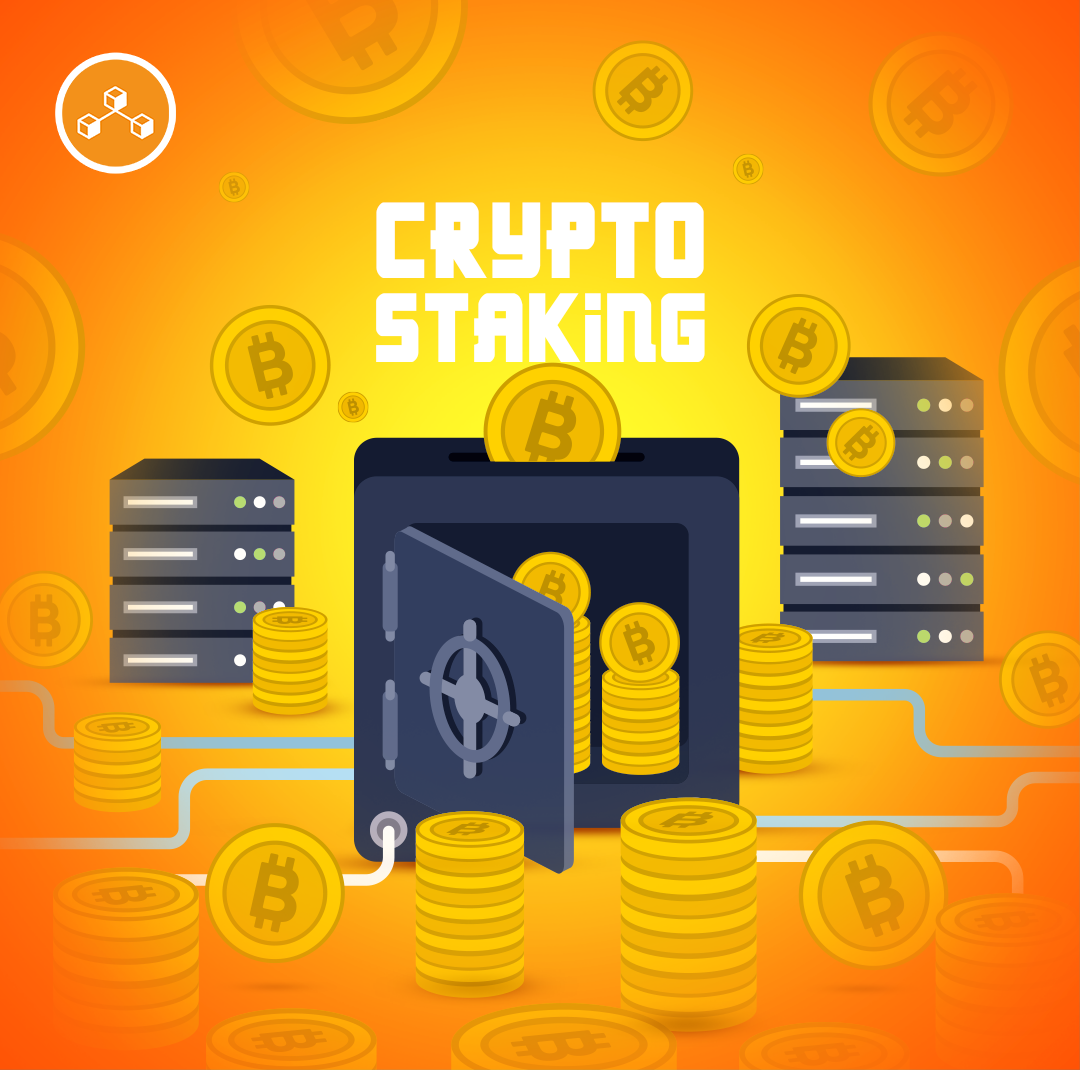Introduction
If you are looking for a way to earn passive income from your crypto assets, you might have heard of crypto staking. Crypto staking is a process that allows you to lock up your crypto coins or tokens in a smart contract, and receive rewards for helping to secure and operate a blockchain network. In this article, we will explain what crypto staking is, how it works, what are the benefits and risks, and how you can start staking your crypto today.
What is Crypto Staking and How Does it Work?
There are different types of staking, depending on the network and the protocol. Some of the most common ones are:
– Delegated Proof-of-Stake (DPoS): Validators are elected by the community and they can delegate their staking power to other users called delegators. Delegators can also vote for their preferred validators, and they receive a share of the rewards. Examples of networks that use DPoS are EOS, Tron, and Tezos.
– Liquid Proof-of-Stake (LPoS): Validators can unstake their crypto assets at any time without a waiting period or penalty. This makes staking more flexible and liquid, as users can easily switch between staking and trading. Examples of networks that use LPoS are Algorand, Cosmos, and Polkadot.
– Non-Custodial Staking: Users can stake their crypto assets directly from their wallets without relying on a third-party service or platform. This gives users more control and security over their funds. They do not have to trust anyone else with their private keys. Examples of networks that support non-custodial staking are Cardano, Ethereum 2.0, and Solana.
Benefits and Risks of Crypto Staking
- Passive Income: By staking your crypto assets, you can earn a steady stream of income, without having to actively trade or invest. The rewards you receive depend on the network, the protocol, the amount, and the duration of your staking. Some networks offer annual percentage rates (APRs) of up to 20% or more, which is much higher than traditional savings accounts or bonds.
- Network Security: By staking your crypto assets, you are contributing to the security and stability of the network, as you are helping to validate transactions and prevent attacks. The more crypto assets are staked, the more decentralized and resilient the network becomes. This enhances its trustworthiness and value.
- Network Participation: By staking your crypto assets, you are also participating in the governance and development of the network, as you can vote for proposals, upgrades, and changes that affect the network. This gives you a voice and a stake in the future of the network, and allows you to influence its direction and growth.
However, crypto staking also involves some risks. You should be aware of them before you start staking. Some of the main risks are:
- Price Volatility: Crypto assets are known for their high price volatility, which means they can fluctuate significantly in a short period of time. This can affect your staking returns, as the value of your staked assets and rewards can change unpredictably. You should be prepared for the possibility of losing some or all of your initial investment. You should only stake what you can afford to lose.
- Lock-Up Periods and Penalties: Some networks require you to lock up your crypto assets for a certain period of time. This can range from days to months or even years. This means you cannot access or use your funds until the lock-up period is over, which can limit your liquidity and flexibility. Some networks also impose penalties for unstaking early, such as slashing your rewards or your principal. You should read the terms and conditions of each network carefully before you stake your crypto assets.
- Regulatory Uncertainty: Crypto staking is still a relatively new and unregulated phenomenon, which means it can face legal and regulatory challenges in different jurisdictions. Some governments may consider crypto staking as a taxable event, a security offering, or a gambling activity, which can have implications for your tax obligations, compliance requirements, and legal rights. You should consult a professional advisor before you stake your crypto assets, and stay updated on the latest developments and regulations in your area.
Tips to Start Staking
- Do Your Research: Before you stake your crypto assets, you should do your research on the network, the protocol, the platform, and the coin that interests you. Understanding how they work, what are their features, advantages, disadvantages, and risks works to increase your chances of success. You should also compare different options and see which one offers the best returns, security, flexibility, and usability. You can use some of the web search results I found for you as a starting point .
- Start Small: Beginners should use a small amount and test the waters before committing to deploying a large amount of funds. This way you get to interact and understand how the staking process works, how the rewards are distributed, and how the platform operates. You can also diversify your portfolio and stake different crypto assets on different networks, platforms to reduce your risk and exposure.
- Use a Reputable and Secure Platform or Service: If you decide to use a third-party platform or service to stake your crypto assets, you should choose one that is reputable, reliable, and secure. You should check the reviews, ratings, and feedback from other users, and see how long they have been in operation, how many users and assets they have, and what are their security measures and guarantees. You should also check their fees, terms, and conditions, and see if they are transparent, fair, and reasonable. Some of the most popular and trusted platforms and services for crypto staking are Binance, Coinbase, Kraken.
- Keep Your Private Keys Safe: One of the most important things to do is keeping your private keys to your wallet safe and secure. Your private keys are the passwords that allow you to access and control your funds, and if you lose them or expose them to hackers, you can lose your funds permanently. You should use a hardware wallet to store your private keys offline. Avoid using online or mobile wallets that are more vulnerable to hacking. Backing up your private keys and store them in a safe place lowers your risks.
Conclusion
Crypto staking is a great way to earn passive income from your crypto assets, while also contributing to the security and development of the blockchain network. Crypto staking can offer you high returns, low costs, and eco-friendly benefits, as well as a voice and a stake in the future of the network. However, crypto staking also involves some risks, such as price volatility, lock-up periods, penalties, and regulatory uncertainty.
We hope this article has helped you understand what crypto staking is, how it works, and why you should try it. If you have any questions, comments, or feedback, please feel free to contact us or leave a comment below. And if you enjoyed this article, please share it with your friends and family, and subscribe to our newsletter for more articles like this. Thank you for reading, and happy staking




